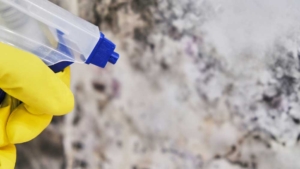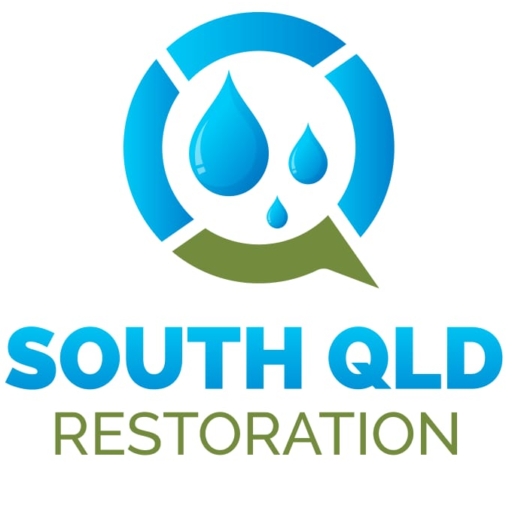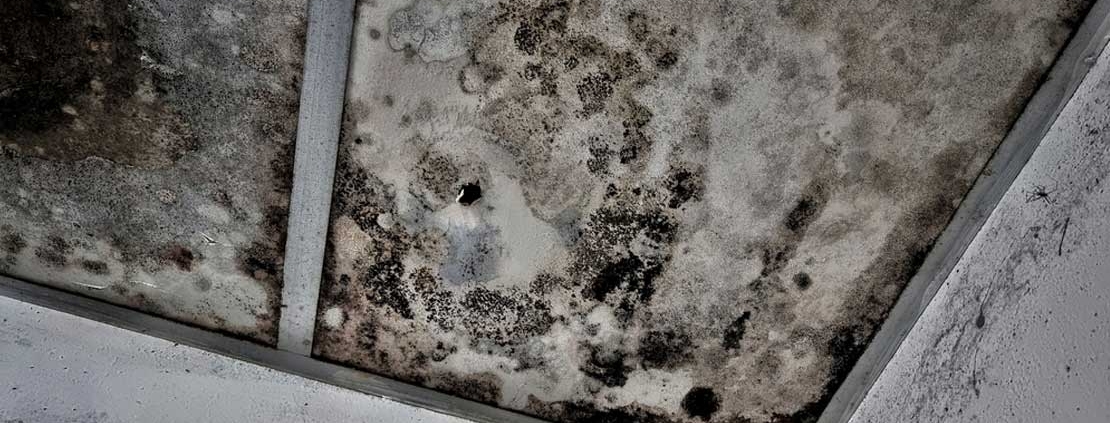How to Get Rid of Mould in Wet Weather and Extreme Humidity?
Mould is a persistent problem for many homeowners, particularly in regions experiencing high humidity and frequent wet weather. Not only does mould mar the appearance of your home, but it can also pose serious health risks. Understanding the causes of mould, the health implications, and the best ways to remove and prevent it is crucial for maintaining a safe and healthy living environment.
What Causes Mould?
Mould, a type of fungus, thrives in environments that are warm, damp, and poorly ventilated. Here are the primary factors contributing to mould growth:
- High Humidity: Mould flourishes in humid conditions, typically when indoor humidity levels exceed 60%. Areas with high humidity are particularly susceptible to mould infestations.
- Moisture: Persistent moisture from leaks, flooding, or condensation provides an ideal breeding ground for mould. Common sources include leaky roofs, windows, and plumbing.
- Poor Ventilation: Inadequate ventilation in bathrooms, kitchens, and laundry rooms can trap moisture, promoting mould growth. Proper airflow is crucial in preventing mould.
- Condensation: Condensation on windows and walls, particularly in colder climates, can lead to damp surfaces that encourage mould growth.
- Organic Materials: Mould feeds on organic materials such as wood, paper, and fabric. Homes filled with these materials are at higher risk.
Mould spores are everywhere in the environment, but they only become problematic when they find the right conditions to grow. Understanding these conditions is the first step in preventing mould growth and avoid expensive mould treatment.
What Are the Health Effects of Mould?
Mould exposure can have significant health consequences, especially for individuals with allergies, asthma, or compromised immune systems. Here are some of the health effects associated with mould exposure:
- Allergic Reactions: Many people are allergic to mould spores, leading to symptoms such as sneezing, runny nose, red eyes, and skin rashes. These allergic reactions can be mild to severe.
- Asthma Attacks: Mould can trigger asthma symptoms, including coughing, wheezing, and shortness of breath. For asthmatics, mould exposure can result in severe and frequent asthma attacks.
- Respiratory Issues: Prolonged mould exposure can cause respiratory problems such as chronic sinus infections, bronchitis, and even pneumonia.
- Toxic Effects: Some moulds produce mycotoxins, which can cause more severe health issues. Symptoms of mycotoxin exposure include headaches, dizziness, fatigue, and in severe cases, neurological problems and lung infections.
People with compromised immune systems, infants, the elderly, and those with pre-existing health conditions are more vulnerable to the health effects of mould. Ensuring a mould-free environment is crucial for protecting the health and well-being of all occupants in a home.
How Do You Stop Mould?

Preventing mould is much easier and cost-effective than dealing with an established mould infestation. Here are some strategies to stop mould from developing:
- Control Humidity Levels: Use dehumidifiers and air conditioners to keep indoor humidity levels below 60%. In humid climates, consider using a hygrometer to monitor humidity levels. Maintaining proper humidity levels is one of the most effective ways to prevent mould.
- Improve Ventilation: Ensure proper ventilation in high-moisture areas such as bathrooms, kitchens, and laundry rooms. Use exhaust fans, open windows, and ensure that vents are unobstructed to increase airflow.
- Fix Leaks Promptly: Address any leaks from roofs, windows, or pipes immediately. Persistent moisture problems are a primary cause of mould growth.
- Insulate: Proper insulation can help reduce condensation on walls and windows, which can lead to damp surfaces conducive to mould growth.
- Clean Regularly: Regular cleaning and drying of areas prone to moisture, such as bathrooms and basements, can prevent mould spores from taking hold. Pay special attention to shower curtains, window sills, and other areas where moisture can accumulate.
- Use Mould-Resistant Products: When renovating or building, use mould-resistant drywall, paint, and insulation to reduce the risk of mould growth. These products are designed to withstand moist conditions better than standard materials.
By implementing these preventive measures, you can significantly reduce the risk of mould growth in your home.
Different Mould Cleaning Brisbane Methods
When mould appears, it’s crucial to address it immediately to prevent its spread and mitigate potential health risks. Mould can quickly become a larger issue if not dealt with properly. Here are some common and effective cleaning methods to tackle mould in your home:
Soap and Water
For minor mould problems, a mixture of soap and water can be very effective. This method is particularly suitable for non-porous surfaces such as tiles, glass, and metal.
- Preparation: Prepare a solution of warm water and mild dish soap.
- Scrubbing: Using a scrub brush or a sponge, scrub the affected area vigorously to remove the mould.
- Rinsing: Rinse the area thoroughly with clean water to remove any soap residue.
- Drying: Ensure the surface is completely dry to prevent the mould from returning. Use a clean, dry cloth or let the area air dry.
This method is simple and safe, making it ideal for small patches of mould that have not deeply penetrated the surface.
Vinegar
Vinegar is a natural and effective mould killer, known for its antifungal properties. It’s suitable for both porous and non-porous surfaces.
- Preparation: Pour undiluted white vinegar into a spray bottle.
- Application: Spray the vinegar directly onto the mouldy area until it is saturated.
- Waiting Period: Allow the vinegar to sit for at least an hour. This gives it time to break down the mould.
- Scrubbing: Scrub the area with a brush or sponge to remove the mould.
- Rinsing: Rinse the area with water and dry it thoroughly.
Vinegar not only kills the mould but also helps to prevent it from coming back. It’s a natural, non-toxic option that’s safe to use around children and pets.
Hydrogen Peroxide
Hydrogen peroxide is another effective mould-killing agent that’s safe for most surfaces.
- Preparation: Use a 3% hydrogen peroxide solution, which is readily available in pharmacies.
- Application: Pour the hydrogen peroxide into a spray bottle and apply it generously to the mouldy area.
- Waiting Period: Let the solution sit for at least 10 minutes. This allows the hydrogen peroxide to penetrate the mould and kill it.
- Scrubbing: Scrub the area with a brush or sponge to remove the mould.
- Rinsing: Rinse the area with clean water and dry it thoroughly.
Hydrogen peroxide is particularly useful for hard-to-reach areas and can help to disinfect and whiten surfaces.
Baking Soda
Baking soda is not only a natural cleaner but also helps absorb moisture, which can prevent future mould growth.
- Preparation: Mix a tablespoon of baking soda with water to create a thick paste.
- Application: Apply the paste to the mouldy area using a brush or sponge.
- Scrubbing: Scrub the area thoroughly to remove the mould.
- Rinsing: Rinse with water to remove any residue.
- Final Spray: For added protection, you can dissolve a teaspoon of baking soda in a spray bottle filled with water and spray the area again. Let it dry without rinsing.
Baking soda is excellent for deodorising and is safe to use on various surfaces, including fabric and upholstery.
Commercial Mould Cleaners
For more severe mould problems, commercial mould cleaners may be necessary. These products are formulated with chemicals specifically designed to kill mould effectively.
- Selection: Choose a mould cleaner that’s appropriate for the surface you’re treating. Always read and follow the instructions on the product label.
- Application: Apply the cleaner as directed. This may involve spraying the product directly onto the mould or mixing it with water first.
- Waiting Period: Allow the cleaner to sit for the recommended amount of time to penetrate and kill the mould.
- Scrubbing: Scrub the area with a brush or sponge to remove the mould.
- Rinsing: Rinse the area with water and dry it thoroughly.
Commercial mould cleaners can be more potent than natural methods and are often necessary for larger or more stubborn mould infestations.
Safety Precautions
When cleaning mould, always prioritize your safety to avoid health risks. Here are essential safety measures to follow:
- Protective Gear: Wear gloves, a mask, and eye protection to avoid direct contact with mould spores and cleaning agents. This prevents inhalation of spores and skin irritation.
- Ventilation: Ensure the area is well-ventilated. Open windows and use fans to circulate air and disperse any fumes from cleaning agents.
- Disposal: Dispose of any cleaning materials, such as sponges or cloths, that have come into contact with mould. Place them in a sealed plastic bag before throwing them away.
- Personal Hygiene: Wash your hands and any exposed skin thoroughly after cleaning mould. Consider showering and changing clothes to avoid spreading mould spores to other areas of your home.
Addressing mould promptly and effectively is crucial for maintaining a healthy living environment. By understanding and employing the various cleaning methods outlined above, you can manage and eliminate mould growth in your home. For minor infestations, household items like soap, vinegar, hydrogen peroxide, and baking soda can be very effective. In more severe cases, commercial mould cleaners and possibly professional mould removal and remediation in Brisbane may be necessary.
Always prioritize safety by wearing protective gear and ensuring proper ventilation during the cleaning process. By taking these steps, you can keep your home mould-free and ensure a safe and healthy environment for you and your family.
What to Do in More Serious Situations
In more severe cases, where mould covers a large area or has penetrated deeply into materials, professional intervention may be necessary. Here’s what you should do in serious mould situations:
- Assess the Extent: Determine the severity of the mould problem. If mould covers an area larger than 10 square feet or if it is growing in your HVAC system, professional help is recommended.
- Consult Professionals: Contact a mould remediation Brisbane specialist to assess the situation and provide a detailed plan for mould removal. Professionals have the expertise and equipment to handle severe mould infestations safely and effectively.
- Containment: Professionals will likely use containment procedures to prevent the spread of mould spores during the mould cleaning process. This may involve sealing off the affected area and using negative air pressure to keep spores from spreading.
- Removal and Disposal: Severely affected materials, such as drywall, insulation, or carpet, may need to be removed and replaced. Proper disposal of mould-infested materials is crucial to prevent further contamination.
- Cleaning and Sanitising: Professional-grade cleaning agents and equipment are used to thoroughly clean and sanitise the affected area. This step ensures that all mould spores are removed and that the area is safe for occupancy.
- Repair and Restoration: After mould removal, any structural damage should be repaired, and steps should be taken to prevent future mould growth. This may include improving ventilation, fixing leaks, and using mould-resistant materials.
Mould remediation services ensure that mould is effectively removed and that your home is safe from future infestations.
How Much Does Mould Removal Cost in Australia?
The cost of mould removal in Australia can vary based on the extent of the mould problem, the size of the affected area, and the specific services required. Here’s a general breakdown of the costs:
- Inspection and Assessment: A professional inspection and assessment typically cost between AUD 200 to AUD 500. This initial assessment helps determine the extent of the mould problem and the best course of action.
- Mould Removal: For minor mould removal, the cost can range from AUD 300 to AUD 700. For more extensive remediation, costs can range from AUD 2,000 to AUD 10,000 or more. The cost depends on the size of the affected area, the type of mould, and the complexity of the removal process.
- Repairs and Restoration: If significant repairs or restoration are needed, additional costs will apply. This can range from a few hundred to several thousand dollars, depending on the extent of the damage and the materials required.
- Mould Remediation: For minor mould removal, costs can range from $500 to $1,500. For more extensive mould remediation in Brisbane, costs can range from $2,000 to $6,000 or more. The cost is influenced by factors such as the size of the affected area, the type of materials involved, and the methods used for remediation.
Mould can be a persistent and potentially dangerous problem, especially in wet weather and high humidity. Understanding the causes of mould, its health effects, and effective prevention and cleaning methods can help you maintain a healthy home environment. In more serious situations, professionals from QLD Restoration mould treatment services may be necessary to ensure thorough remediation and to prevent future mould growth. While the costs of mould removal can vary, investing in proper mould management is essential for the health and safety of your home and family.
By taking proactive measures to control humidity, improve ventilation, and promptly address any sources of moisture, you can significantly reduce the risk of mould in your home. Regular cleaning and maintenance, combined with the use of mould-resistant materials, can also help keep your home mould-free. If mould does appear, addressing it promptly and, if necessary, seeking professional help will ensure that your home remains a safe and healthy environment for you and your loved ones.





